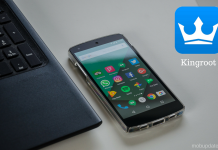Covid-19, the one trending word that gives you jitters has already devastated the entire world with its powerful effects. And the effect is such that it’s beyond your prediction. Besides, killing numerous precious lives, the Covid-19 has created havoc in the global industrial sector. With an unprecedented adverse impact, the economy is completely shattered due to the pandemic.
While several sectors have been facing a decelerated growth under the Covid-19 menace, there are also strong indications that certain technologies will eventually see greater adoption in the coming days. This is because the tech-savvy people working from home are likely to acquire more and more technologically-equipped resources for their ease at work. One such technology is the Internet of Things, which has essentially acted as a bridge of networks in the recent past. Covid-19 pandemic has left a deep impact on it as well. Let’s check it out through this article.
Contents
● Less interest in consumer IoT devices
People are spending a lot of time at home, and hence they are unlikely to go out and procure personal IoT devices at a large scale. App downloads for major consumer IoT devices are a sole indicator for the considerable reduction in sales. The sparse download volumes as well as lower ranks of these apps also mark the declining interest in IoT devices.
● Increased access to emote assets
In the wake of the Covid-9 pandemic, remote asset access tools gain popularity since they are capable of connecting people with machines and assets. They allow people to remotely communicate with machines and perform virtual inspections, remote diagnostics, and support.
● Rise of digital twins
To deal with the present scenario, digital twins have come into being. They are widely used to create digital representations of the end-to-end supply chains that enable customers to have an idea of sourcing options. It also helps them to assess risks and evaluate trade-offs to automate their decisions.
● Large-scale increase in drone usage
The delivery and usage of drones have noticed a steep surge in this hour of crisis. Drones have been of immense help in monitoring, detection, and surveillance operations. They have also significantly aided the process of medical delivery in several hospitals and promoted faster treatment of active patients. Besides, drones have also been largely empowered for disinfectant spraying.
● Rise in Specific IoT healthcare applications
Healthcare, which is the fulcrum of the pandemic, has been experiencing a sharp increase in IoT applications. Digital healthcare solutions are booming the world. IoT devices are being incorporated to perform digital diagnostics. Besides, remote IoT monitoring solutions are severely growing as they monitor the underlying chronic ailments that increase the risk of death due to Covid-19. Moreover, countries like China have also adopted robotic assistance to disinfect and sanitize hospitals and for emergency medical delivery purposes.
● Extensive use of Track and Trace solutions
With the disruption in supply chains, real-time vessel tracking and visibility are gaining more importance. Under the present lockdown situations, IoT technology providers are on a rapidly increasing demand for providing access to vessel tracking via their networks.
● Popularization of Smart city data platforms
Leaving behind several other smart city initiatives, it is the ability to have an ultra-edged data platform and its implementation during crises that make a city smarter enough to make the best use of its resources. Smart city data platforms serve to be an essential and handy tool in dealing with substantial crises like the Covid-19. They are efficient in handling the pandemic with an intense base for allowing epidemiological investigations, obtaining and confirming data of coronavirus cases as well as people coming in contact with positive patients.
● Steeping of easy-to-install IoT retrofit solutions
Amidst the pandemic scare, easy-to-install IoT retrofit solutions have proved to be significantly beneficial for companies and end-users that are not well-connected digitally. However, they don’t provide all the same benefits as an inbuilt IoT solution. Through such reliable and compact solutions, complete data security is ensured as it gets sent to the utility company.
Conclusion
Under the current situation, all service sectors have become stagnant with a constant downfall in the growth and economic rating. We are still unaware of the exact facts and figures of the economic deterioration. And we even don’t have the idea how far this will continue and where this will ultimately land upon. However, with a heavy heart we still tend to find a ray of hope in the light of our IoT services. The Internet of things being inversely proportional to the other lagging sectors, is delightfully on the top of consumer demand and this is what takes it to another level. We strongly hope that the IoT acts as the driving force in pulling out all other crippled sectors from the pit and continue to be our savior during subsequent crises.























![Top Best Galaxy Note 8 Cases [2021] best Galaxy Note 8 cases to protect your Smartphone](https://www.mobupdates.com/wp-content/uploads/2017/08/0-324x235.png)


![How to Get Sony Xperia XZ and XZs Oreo update [Android 8.0 Firmware] How to Get Sony Xperia XZ and XZs Oreo update [Android 8.0 Firmware]](https://www.mobupdates.com/wp-content/uploads/2017/11/1-42-100x70.png)









 Online casino
Online casino
